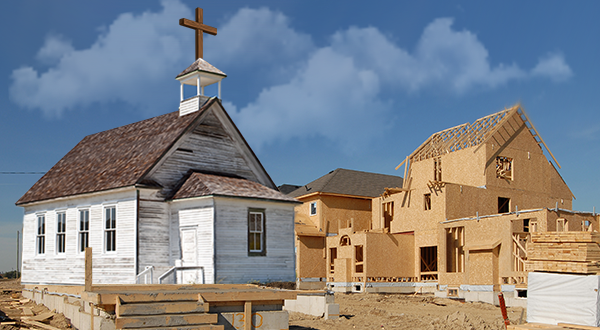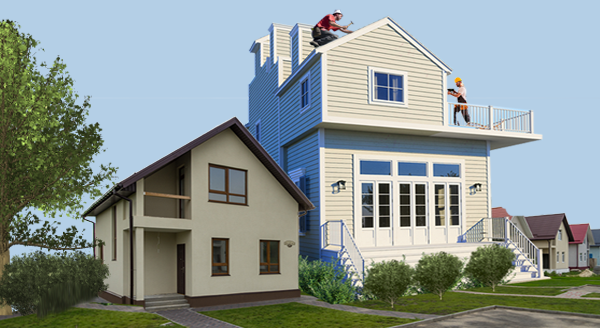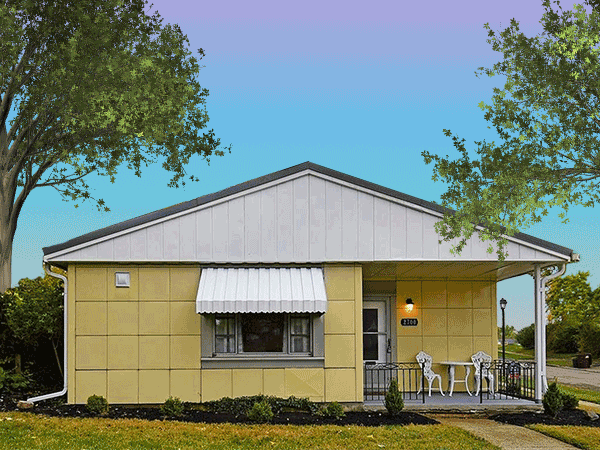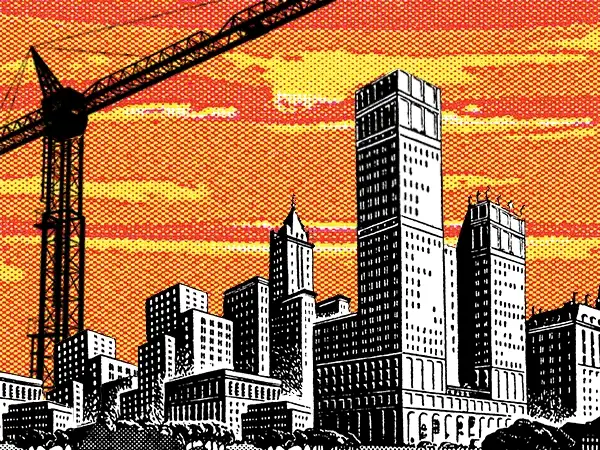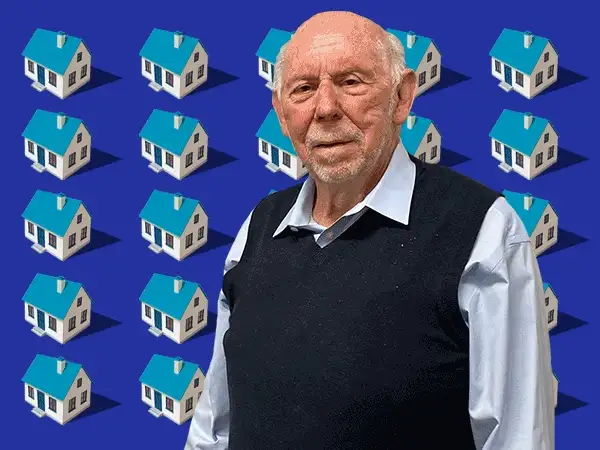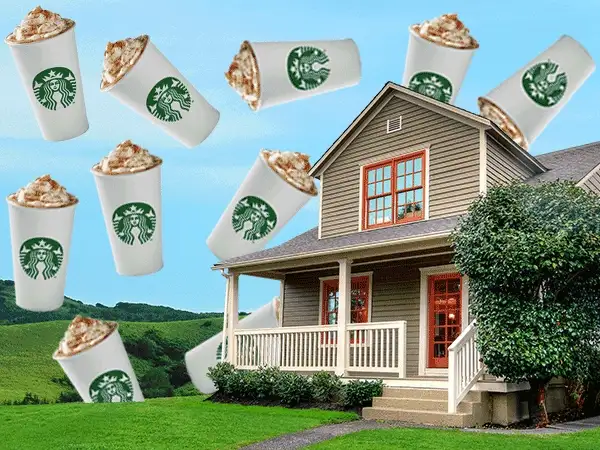An unpleasant reality lurks within America’s supposedly affordable cities.

For perhaps as long as houses have been sold, real estate agents and lenders have used a maxim to explain to prospective buyers whether a home is within their price range: The sales price, they say, shouldn’t be more than ~3x-4x greater than a household’s annual income, maybe up to 5x for a household with no other debts.
And, for almost as long, anybody who followed this unwritten rule would’ve noticed a definitive geographic pattern: Somebody with an average income could buy in most every large city in the interior of the United States while affording basically nothing on the coasts.
Looking at average home values at the metropolitan level, this is largely true today, even as real estate values have soared in the last few years. Sunbelt and Midwestern metros like Houston and Indianapolis are broadly affordable while superstar coastal metros like the Bay Area and Boston are not.
The Hustle
But an unpleasant new reality lurks within these supposedly affordable metros.
Local buying power is diminishing in an ever-growing share of places like Columbus, Dallas, Kansas City, and California’s Inland Empire, reducing opportunities for where middle-class residents can live. They’re now excluded by price from large swaths of their home cities and suburbs that not long ago were within their financial grasp.
The Hustle analyzed Census American Community Survey data for the 35 largest metro areas in the United States — those with populations of at least 2m residents — comparing the median home values of every zip code of every metro to that metro’s area median income in 2022, the most recent year data is available at the zip code level. (Census zip code data is a geographic approximation of US postal zip codes.)
If a median home value was more than 4x above the metro area’s median household income, we defined that zip code as “exclusive,” as it was beyond the financial reach of a median household.
Altogether, 50.4% of these metros’ zip codes were exclusive, and the coastal cities unsurprisingly had a greater share of exclusive zip codes than Middle America. But nearly the entirety of those coastal metro areas were already exclusive in 2012. The surprise came in the Midwest and Sunbelt, which saw a massive jump in exclusive zip codes — found in their urban centers, close-in suburbs, and fringe exurbs — in just a few years.
- Nashville saw the biggest hike of any metro, with its share of exclusive zip codes more than doubling from 2012 to 2022, rising from 16% of its total zip codes to 40%.
- The share of exclusive zip codes in Las Vegas, long known as a magnet for the middle and working classes, went from 34% to 73%.
- The Dallas, Houston, and Indianapolis metro areas saw their number of exclusive zip codes increase by at least 2x.
The Hustle
We used the 4x rule to present a simple measure of affordability, rather than calculate whether a homebuyer would be “cost burdened,” which would require considering local factors such as property taxes, utilities, and insurance costs.
The pricing data we’ve used from the Census are “home values.” Actual sales prices for homes, which are not tracked by the Census, tend to be higher, meaning these calculations may not even show the full depth of the problem.
Unaffordability and exclusivity, of course, are not new issues. Working class and poor Americans, especially renters, have long been forced to endure long commutes or live in substandard housing in almost every city, says Jenny Schuetz, an urban economist previously with the Brookings Institute who has researched exclusive communities.
“What has been getting worse over the past decade, and then particularly bad over the last few years during the pandemic, is that middle-income households are increasingly squeezed,” she says.
These households that could once afford a typical home in a variety of locations in their metro area now have fewer and often less desirable options. And, if nothing is done, exclusivity may spread farther.

The Hustle
How communities became exclusive
When America started building organized neighborhoods and suburbs en masse more than 100 years ago, exclusion was the goal of many communities.
Racially restrictive covenants barred Asian, Black, Jewish, and Latino residents, and land use restrictions and zoning laws — which regulated everything from home and lot sizes to trellises and windows — ensured that single-family homes dominated while apartments and other multifamily units faced obstacles.
The Supreme Court and federal government put an end to explicitly discriminatory housing regulations in the 1950s and 1960s. But strict zoning and land use rules largely stayed on the books, limiting growth in popular communities.
In recent decades, this mismatch of supply and demand made desirable areas expensive — and exclusive. America saw “booms without boomtowns,” wrote David Schleicher, a Yale Law School professor who has studied zoning and local housing policy.
In the 1990s and 2000s, as Silicon Valley, Boston, and New York City experienced rejuvenation, prices soared at a far greater rate than their population.
Then, starting in 2020, remote work and the pandemic housing market catalyzed these problems nationwide, as affluent residents moved to peripheral areas in their own metro areas or to new metro areas where they hadn’t considered living before, says Taner Osman, cofounder of Westwood Economics & Planning Associates.
Osman has studied the Riverside-San Bernardino metro area, known as the Inland Empire. Typically considered a bedroom community and known for affordable prices — by Southern California standards — it saw an influx of Los Angeles residents in the last few years.
Housing prices in the area have gone up ~53% since January 2020, Osman says, about nine percentage points higher than the rest of the state. Its share of exclusive zip codes, in an area with a median household income of ~$81k, has increased from 49% in 2012 to 70% in 2022.

The Hustle
“It will absolutely change the profile of people living in Riverside County,” Osman says. Residents “who could benefit from more affordable housing will either have to postpone any decision they might make to build a home — or move… And that place might be in [California’s] Central Valley. Or that place might be in Texas.”
That state welcomed 350k+ people who’d moved in from another state in 2020 and 2021, more than anywhere else besides Florida, contributing to already hot real estate markets in metros like Dallas, Austin, and Houston.
Steve Sherman, a research scientist at Rice University’s Kinder Institute for Urban Research, says Houston’s size and diversity have long created various housing submarkets within it, some resembling Detroit and others hewing closer to Brooklyn. But more areas have started to lean toward the latter.
When Sherman and other Kinder researchers analyzed median home prices in 2023 in Harris County — which includes the city of Houston and is the largest county in the Houston area — they found just seven of 143 neighborhoods featured median-priced homes affordable for households making the county’s median income ($71k).
Those neighborhoods don’t feature the same economic opportunities as many others in Houston. One of them, Galena Park, is near the Ship Channel, an area east of downtown known for its close proximity to polluting petrochemical plants and flood risks.

The Hustle
Surprisingly, Sherman and the Kinder Institute researchers found that Houston’s dramatic price increases from 2010 to 2022 happened as it added more housing supply than population on a percentage basis. Sherman suspects the rise may stem from a dearth of new units at affordable price points and in geographically diverse enough areas.
Those affordable homes are harder to build: Given expensive land prices and elevated building material costs in the last few years, developers can’t easily make returns on middle class housing. New homes geared toward income earners making even a little less than the median often require public subsidies “just to get studs in the ground,” Sherman says.
“We shouldn’t build a wall around us”
During the pandemic, plenty of people seeking to spread out turned their attention to the Midwest, too. In 2022, Zillow named Prairie Village, Kansas, a suburb of Kansas City, Missouri, the site’s “most popular city.” Nowhere else in the US ranked higher in per-day views of for-sale homes.
Generations ago, Prairie Village had middle class affordability: The zip code encompassing most of the city (along with a small number of homes in nearby Fairway and ritzy Mission Hills) featured a median home value of ~$84k in 1993, according to Census data reported in the Kansas City Star at the time, barely more than 2x the Kansas City area median household income. But the city, boxed in by other suburbs and governed by strict zoning laws and housing covenants (including, in its early years, racial covenants), couldn’t grow when demand picked up.
Most of the new development in recent years was limited to razing an old Cape Cod-style home and replacing it with a larger, more expensive McMansion.
By 2012, the median home value was $214k, 3.6x the area median income. And when it captivated Zillow users in 2022, the median home value was $385k, 4.8x the area median income. Prairie Village was officially exclusive.

The Hustle
Zillow highlighted the city’s “activity-filled parks, posh shops, and restaurants.” (It also has a top school district.) But, as city council member Ian Graves told The Hustle last year, “People who work in our shops and schools can’t afford to live in the communities that they serve.
“I think that’s sort of morally bad…that we would be constructing a community that’s so exclusive that we import workers and teachers and firefighters and police officers.”
The last few years, city officials hatched recommendations to its zoning regulations that would make it easier to build duplexes and accessory dwelling units in certain areas. But after the city council approved the recommendations in 2022 many residents, concerned about property values and changes to the city’s character, signed petitions to oppose rezoning and packed into city council meetings for months, expressing displeasure about the plan even when housing wasn’t on the agenda.
“You are elected by the current property owners,” said one resident. “You are not elected by middle income blue collars, seniors, [or] young professionals who have a desire to move into the area.”

Redevelopment in Prairie Village has mostly led to larger, more expensive single-family homes. (Mark Dent)
The recommendations were scuttled, and a watered-down version passed this summer.
In the Indianapolis area, exclusive zip codes have more than doubled in the last decade, including two in suburban Hamilton County. Andrea Davis, executive director of HAND Incorporated, an organization that advocates for and builds affordable housing in the Indianapolis suburbs, says some people in the region believe that if families can’t afford Hamilton County they should just settle somewhere else.
“But there are services here and amenities here that make this an awesome place to live,” says Davis, such as a highly-rated program for students with disabilities at the Hamilton Southeastern school district. There are families, she says, who become housing burdened to access the district.
“We shouldn’t build a wall around us and say, ‘You have to earn your way in,’” Davis says.
Can you stop further price increases?
In metros like New York City, Los Angeles, and Washington D.C., it took time for exclusive communities and neighborhoods to become the norm throughout the entire region.
“You had a long time period of supply not keeping up with demand,” says Schuetz, the urban economist. “And you go from a handful of exclusive neighborhoods to a lot of more exclusive neighborhoods and a shrinking number of both middle- and low-income neighborhoods.
“So the really important question for places that are newly having affordability problems [is] are they going to get out ahead of it and figure out ways to keep adding housing and keep the city overall from getting more expensive and exclusive?”

Aerial view of a suburban development in a planned residential community in the suburban metropolitan Houston, Texas area (Getty Images)
State governments from California to Montana to Massachusetts to Florida have passed laws designed to preempt local zoning laws and stimulate a wider variety of housing supply. Some have focused on adding density near transit and in commercial corridors, while others have tried to make it easier to build multifamily housing types.
Entry-level homeownership in more metros might not be “a house with a yard,” Schuetz says. “It might be a townhouse. It might be a house that's 10 years old, not new construction. And in many places it's going to be a condo in a multifamily building.”
Prospective homebuyers will have to shift expectations to live in something different than they’ve imagined. And homeowners, especially those in exclusive neighborhoods, will have to accept living with them.
Housing And Real Estate


